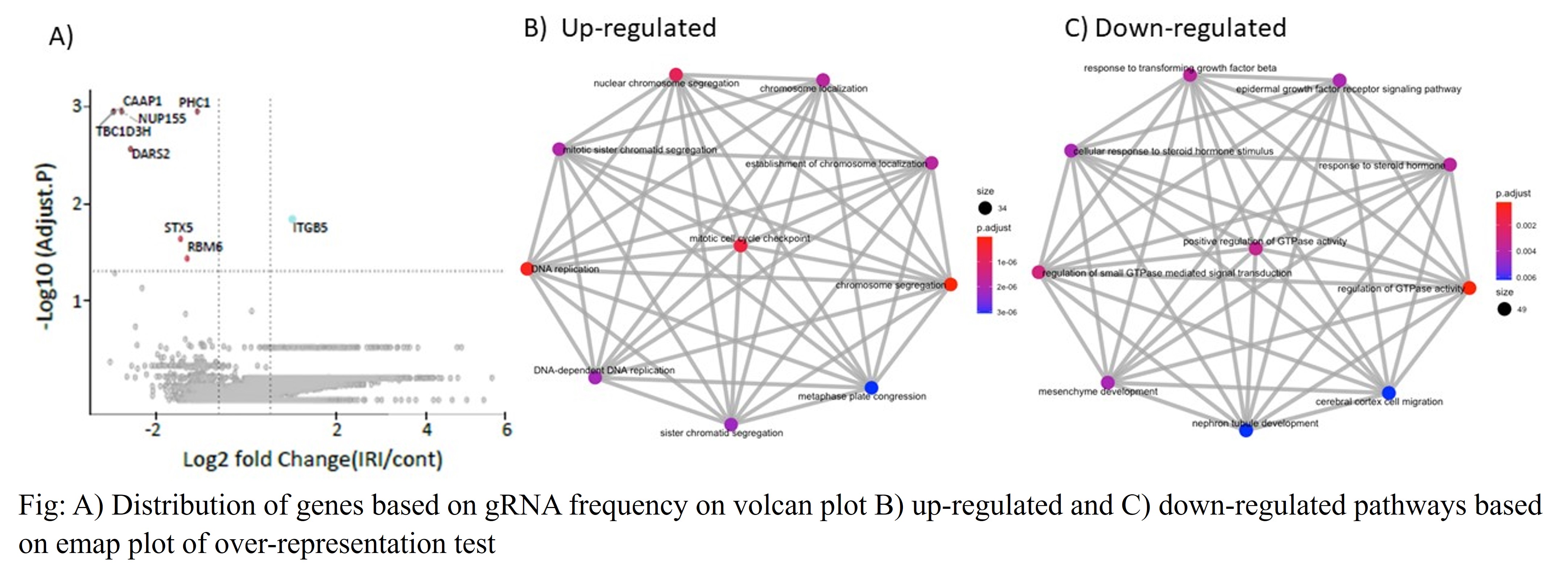Inhibition of ITGB5 Protects Hepatocytes from Ischemia Reperfusion Injury
1Transplant Research Institute, James D. Eason Transplant Institute, Department of Surgery, The University of Tennessee Health Science Center, Memphis, TN, 2Surgery, University of Maryland, Baltimore, MD, 3University of Tennessee/Methodist Transplant Institute, Memphis, TN
Meeting: 2022 American Transplant Congress
Abstract number: 661
Keywords: Ischemia
Topic: Basic Science » Basic Science » 14 - Ischemia Reperfusion
Session Information
Session Time: 5:30pm-7:00pm
 Presentation Time: 5:30pm-7:00pm
Presentation Time: 5:30pm-7:00pm
Location: Hynes Halls C & D
*Purpose: Liver transplantation is the best treatment option for patients with end-stage liver disease (ESLD). Despite the increasing interest to the machine reperfusion, cold preservation is still main method for organ procurement. Moreover, transplant centers are using high-risk donors that are known to be associated with exacerbated ischemia-reperfusion (IRI) injury and worse outcomes due to the increasing gap between available donors and recipients. Hence, understanding the molecular mechanisms associated with liver IRI is very critical to identify novel target genes which can be manipulated (e.g., either by available drugs or new techniques such as gene editing) during IRI.
*Methods: HepG2 cell line has been used for in-vitro IRI model and CRISPR functional genomic screening approach due its unlimited growth potential and its universal utilization in liver research. Chemical agents antimycin and hydrogen peroxide were used to mimic ischemia conditions and reperfusion was established by replacing the oxygenated nutrients rich media. Brunella CRISPR library with >70,000 gRNAs was utilized at MOI:0.3 to knock out single gene in a given cells. IRI resistant cells were flow sorted and gRNA frequencies were analyzed by “MAGeCK” integrative analysis pipeline after the next-generation sequencing (NGS). Later, bulk RNA-sequencing was performed for ITGB5 knock-out (KO) HepG2 and control cells to investigate the potential downstream mechanism.
*Results: We identified 8 significant genes from CRISPR screening. One out of 8 showed enriched gRNA profile and 7 out of 8 displayed depleted gRNAs profile after the I/R injury (p < 10*e-5 and FDR < 0.05 (Fig A)). Enriched gene called, ITGB5 whose inhibition has been previously shown to attenuate renal IRI (McCurley et al, JASN,2017) was also discovered in our study. Pathway analysis from differentially expressed genes (DEG) in ITGB5-KO compared to control cells showed the upregulation of cell cycle and proliferation related pathway as a defense mechanism against hepatic IRI (Fig B). GTPase activity related pathway were down regulated in IRI resistant ITGB5 KO cells (Fig C).
*Conclusions: This is the first study that demonstrates the utility and applicability of CRISPR based library screening and the role of ITGB5 against hepatic IRI.
To cite this abstract in AMA style:
Dogan M, Naik S, Watkins C, Bajwa A, Mas V, Eason J, Kuscu C, Kuscu C. Inhibition of ITGB5 Protects Hepatocytes from Ischemia Reperfusion Injury [abstract]. Am J Transplant. 2022; 22 (suppl 3). https://atcmeetingabstracts.com/abstract/inhibition-of-itgb5-protects-hepatocytes-from-ischemia-reperfusion-injury/. Accessed December 29, 2025.« Back to 2022 American Transplant Congress

